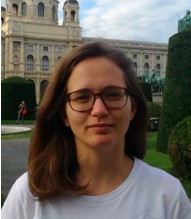
Barriers to Digital Co-Creation in Estonia and how they could be Overcome
Rebecca Strauch, Anna Mayer und Corine Fontijn
Abstract
The results of an identification of barriers in the digital co-creation process for creating public services in Estonia are presented. They include the stakeholders’ mindset towards responsibility sharing, the quality of relationships between stakeholders, hierarchical expectations towards government, and miscellaneous matters such as time and finance.
Interviews with ten stakeholders from academia, local- and national government and NGOs were conducted and analysed. Our findings fit the current status in the academic literature. We confirm that there is an openness with regards to the direction in which public co-creation based on digital technologies will lead.
Context
Nearly each country worldwide has their own e-governance initiative which is based on e-government and e-democracy.
In the context of challenges such as an ageing population, decreased public budget and high expectations from citizens, governments are willing to establish more citizen-oriented public services (Mager, 2016). Public co-creation covers the involvement of citizens in the creation and design of public services. While the concept is discussed frequently in academic literature, the actual influence of digital technologies in the context of a reallocation of tasks between administration and citizens is not yet elaborately researched (Lember, 2018). Yet, the need of an integrated perspective, where society and state are seen as a whole, is stated in the literature about digital co-creation (Dunleavy & Margetts, 2010; Mergel & Kattel, 2017).
The government of Estonia faces social and administrative challenges similar to other European countries. However, its relatively good advanced digital public service, as proven by various international rankings and reports, sets it apart (UN E-Government Survey 2018; eGovernment benchmark 2018 report). For this reason, Estonia is in the center of our case study to identify drivers and barriers for digital co-creation and how they could be overcome.
Method
To identify barriers of (digital) co-creation in Estonia and to analyse how these can be overcome, the approach of a qualitative content analysis is chosen. Due to the explorative process (Mayring, 2014) of the method, the formulation of inductive categories contributes to the analysis of the case. Based on recommendations and the analysis of the literature, ten stakeholders from various fields such as academia, local and national governments or from NGOs were interviewed.
After a transcription of each interview, each transcript was coded twice by different coders individually. As content-analytical unit the wording ‘barriers to co-creation’ was chosen.
Results
The compiled results of our interviews enabled an identification of barriers towards digital co-creation. How the barriers can be overcome was quite left out in the open, however some suggestions can be made. We will list the main barriers below, the order based on how frequently they were mentioned:
Stakeholders’ mindset
Stakeholders involved in digital co-creation do not always want to share responsibility. Conservatism, routine and resulting attitudes towards responsibility of government, civil society and citizens alike can block fruitful cooperation. However, we did find indicators that if solving an issue reaps benefits to all stakeholders, digital platforms do help facilitate co-creation.
Relationship between stakeholders
All affected stakeholders should be involved in the process of co-creation. However, in practice stakeholders have difficulty reaching each other and most initiatives originate from private actors. The main reason is that for proper exchange, real-time feedback from stakeholders is necessary to exchange and develop ideas. Digital platforms would allow for such real-time feedback between a diverse set of actors.
Hierarchical structures / top-down government
Stakeholders in a problem (private actors, civil society, citizens) often do not want top-down government, rather participatory governance, but still expect the government to create and implement policies. The observations that co-creation largely materialises in local settings, and in that the Estonian government department of artificial intelligence and digitalisation is more innovative than others, show that digitalised co-creation is currently facilitated by non-hierarchical and tangible settings primarily.
Further barriers
Furthermore, we found that time matters: setting up digital co-creation structures is often in conflict with financial- and time pressure, especially in government. In addition, finances matter: there is a discussion about whether participation in (digital) co-creation is aided by financial incentives or not. Lastly, limited data exchange especially between different government departments blocks the availability of quality data that can be shown to the public.
The results show that barriers to co-creation address mostly the relationship between stakeholders and their attitudes toward problems in society. There are several indications that the digital aspect might be a driving force in overcoming barriers to co-creation.
Theoretical & practical implications
The theoretical expectation that progressive mindsets about responsibility sharing, positive and trustful stakeholder relationships, as well as comprehensive data presentation matter for successful digital co-creation, is confirmed by our study.
However, practically digitalised co-creation mostly makes sense at larger community level and the national level. On local levels, where most co-creation experiments are, initiatives such as participatory budgeting seem to be more about having close-knit networks between stakeholders than about social innovation per se.
Still, our identified barriers can be used to foster awareness of them. Making all parties involved of the potential barriers to be faced, stimulates their careful handling.
Key Points
Digitalised co-creation is not yet used to its full potential. However, it can both save costs, as well as increase democratic legitimacy (Voorberg et al., 2014). It can foster innovative solutions to social problems.
However, using the potential of digitalisation, the mind-sets of several parties need to change. Government officials need to shred their hierarchical mindset and be willing to let citizens take initiative. Private parties and NGOs need to let go of their implicit reliance on the government to take the initiative to tackle social problems.
For citizens to actively participate, government needs to ensure that quality data are available which can be obstructed by the ‘silo-structure’ of data storage between ministries. Citizens in turn need to learn how to work with raw data and need to be able to give real-time feedback on co-creation processes.
Unterlagen

Rebecca Strauch:
Rebecca Strauch completed her master’s in political science in the double degree program between the University of Konstanz and the University of Essex. She is currently pursuing a PhD in comparative autocracy research with a focus on information- and communication technologies at the University of Constance.

Anna Mayer:
Anna Mayer holds an undergraduate degree in Political Science from the University of Regensburg. In her master thesis (Political Science, University of Vienna) she analysed the e-residency, a program initiated by the Government of Estonia. While deepening her research interest in technology and societies, Anna currently pursues a degree in business and computer science.

Corine Fontijn:
Corine Fontijn holds an undergraduate degree in liberal arts & sciences. After this, she pursued an MA in Politics and Public Administration at the University of Konstanz, and an MSc in European Governance at Utrecht University. After rounding of this double degree cum laude, she now works in Dutch-Flemish regional funding administration.
